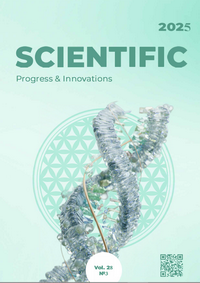Modern methods of visualization in the study and diagnostics of animal mammary glands diseases
DOI:
https://doi.org/10.31210/spi2025.28.03.36Keywords:
animal mammary glands, veterinary diagnostics, pathology, mastitis, milk, tumors, animal welfareAbstract
The purpose of the article is to analyze modern visualization methods used to diagnose mammary glands diseases in animals of various species, as well as to assess the methods’ advantages, limitations and prospects for use. Mam-mary glands diseases in animals are one of the most pressing problems of veterinary medicine and livestock farming. Mastitis remains the most wide spread pathology, which is mainly registered in cows, goats and sheep, negatively affecting the productivity, animal welfare and economic indicators of the dairy industry. Another significant group of pathologies are breast neoplasms, which are especially well studied in dogs and cats. Timely detection of mastitis and tumors is crucial for the effective treatment and prevention of complications. Electronic literature search has been conducted in the Web of Science, Scopus, PubMed and Google Scholar databases over the recent 20 years following the principles of objectivity and system analysis. The possibilities of ultrasound diagnostics, radiography, computer and magnetic resonance imaging, as well as the latest technologies, in particular elastography and contrast-enhanced ultrasonography were considered in the article. It was found that among farm animals, the most common is ultrasound examination of the mammary glands, which is characterized by mobility, rapid obtaining of results in real time and the absence of the need for anesthesia. This method is effectively used to detect subclinical mastitis, monitor the course of the disease, and determine the optimal time to start therapy. The final diagnosis is confirmed by microbiological examination of milk. Other visualization techniques, such as radiography, computered and magnetic resonance imaging are used less frequently, mainly to assess normal anatomy or in studies aimed at comparing it with diagnostic methods in humans. In small animals, mammary glands neoplasms are diagnosed using ultrasound, radiography and computered imaging, followed by histo-pathological verification. Doppler imaging, contrast-enhanced ultrasonography, and elastography are used to differentiate non-malignant and malignant tumors. Of particular importance is the visualization of lymph nodes and detection of metastases using elastographic methods. Magnetic resonance and positron emission imaging are considered promising areas, however their widespread introduction into the clinical practice is limited by a high cost of equipment.
Downloads
Published
How to Cite
Issue
Section
License
Copyright (c) 2025 Scientific Progress & Innovations

This work is licensed under a Creative Commons Attribution 4.0 International License.

 Creative Commons Attribution 4.0 International Licens
Creative Commons Attribution 4.0 International Licens